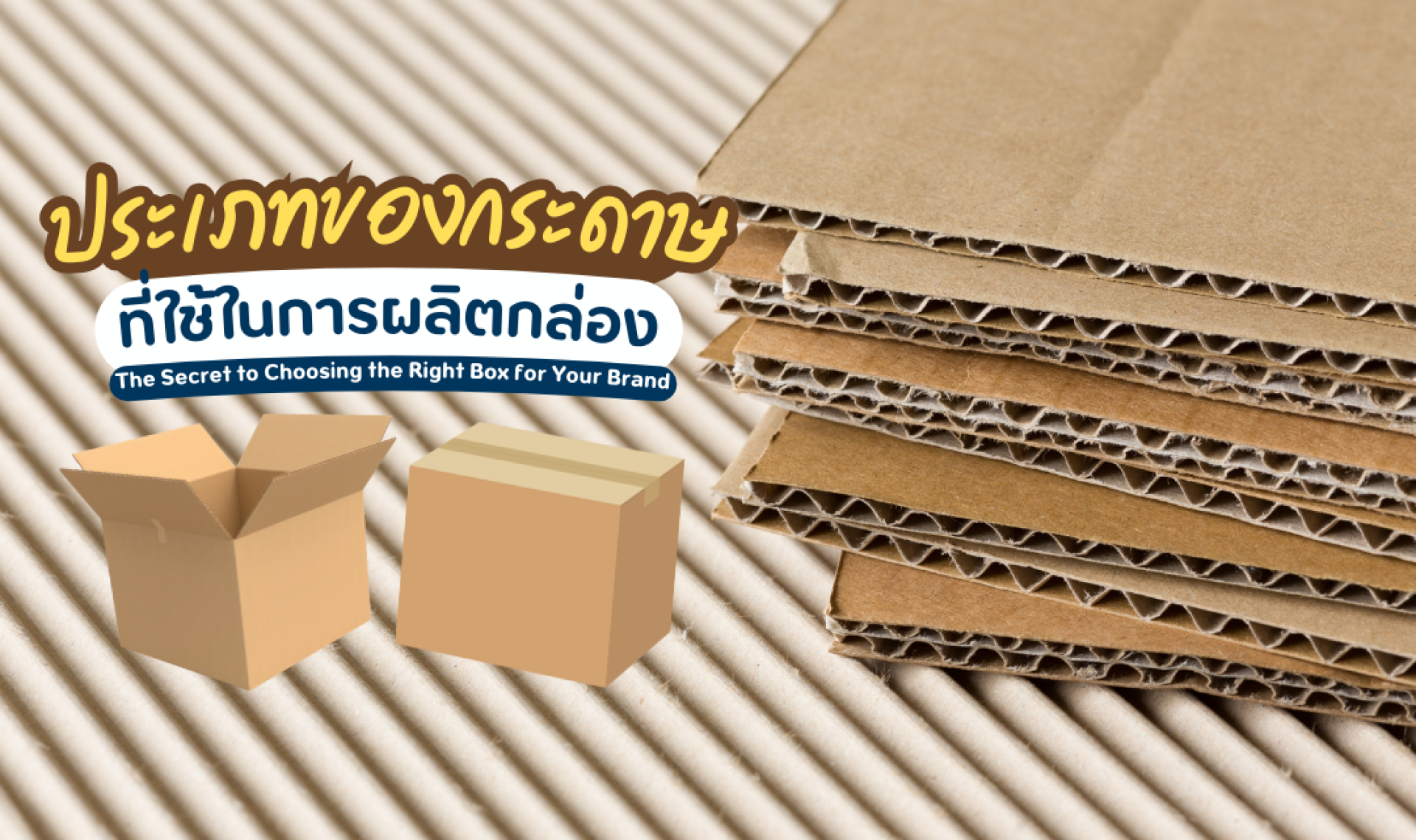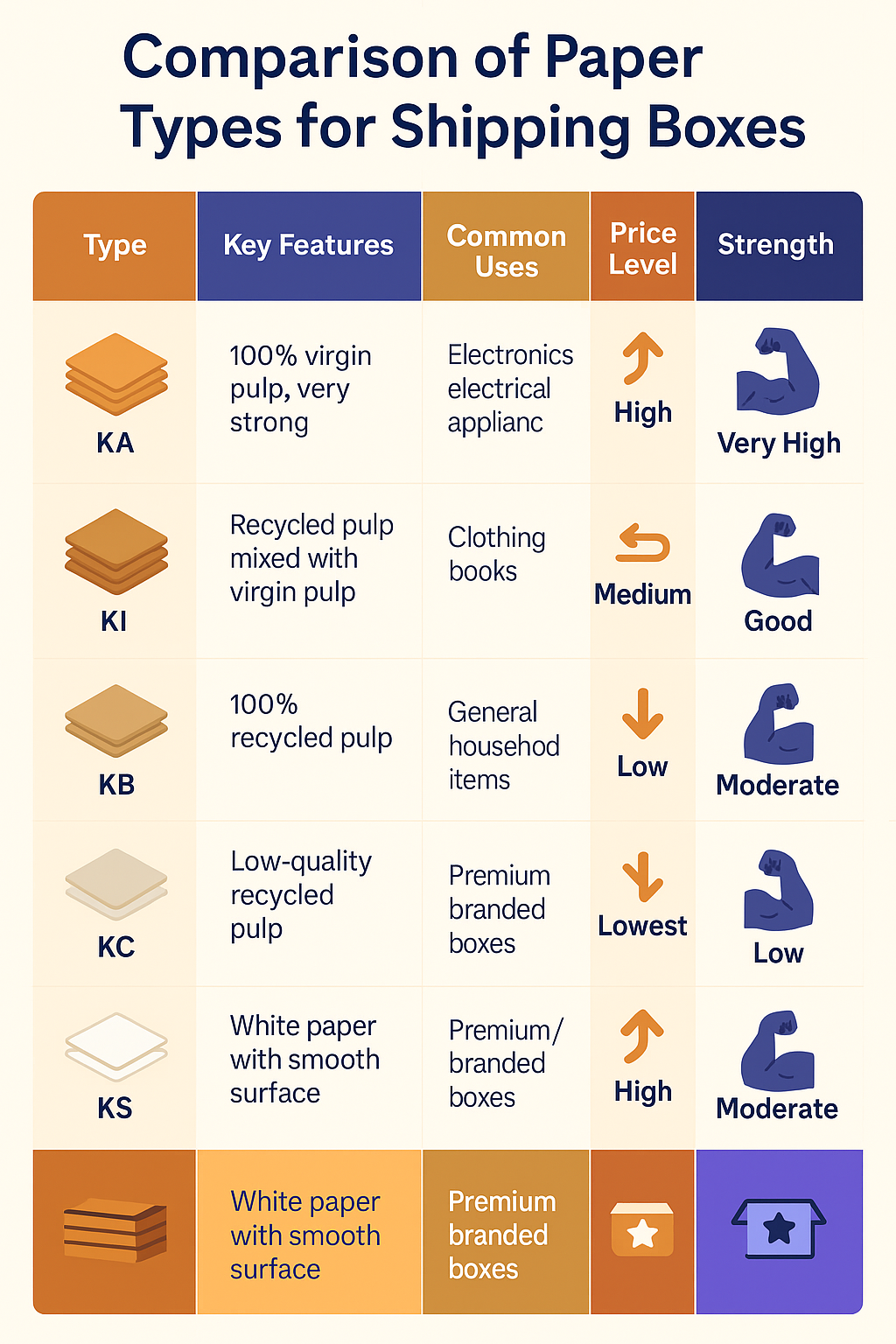Cardboard Confidential: The Secret to Choosing the Right Box for Your Brand

The Unseen Hero: Why Your Packaging Box Matters
Whether you're running an online or a physical store, one of the most crucial steps in the shipping and packaging process is often overlooked: the box itself. A box is more than just a container; it's your brand's first physical touchpoint with the customer. The quality of your packaging speaks volumes about your attention to detail, professionalism, and commitment to ensuring products arrive safely.
What many people don't realize is that the corrugated cardboard used for shipping boxes comes in various types, grades, colors, and flute profiles. Each option offers different properties and is suited for specific applications. Choosing the right one can significantly reduce costs and provide superior protection for your products.
Types of Corrugated Paperboard for Boxes
Corrugated cardboard is typically made of 2 to 5 layers, including the linerboard (the flat outer sheets) and the fluting (the wavy middle layer that provides strength and cushioning).
1.KA Paper (Virgin Brown Kraft)
- Properties: Made from 100% virgin pulp, this paper is highly durable, strong, and resistant to compression.
- Best For: Products requiring maximum strength, such as electronics, heavy appliances, or high-value items.
- Pros: High quality, excellent compression strength, and better moisture resistance than recycled paper.
- Considerations: More expensive than other types.
2.KI Paper (Mixed Recycled Kraft)
- Properties: A blend of recycled and a small amount of virgin pulp. It offers good strength and durability.
- Best For: General-purpose shipping boxes, especially for items like clothing, books, or lightweight goods.
- Pros: Cost-effective and widely used, making it ideal for businesses with high shipping volumes.
- Considerations: Not as strong as KA paper.
3.KB Paper (Recycled Brown Kraft)
- Properties: Made almost entirely from recycled pulp, making it a very economical option.
- Best For: Light items that are not fragile.
- Pros: The most affordable option, great for small businesses looking to minimize costs.
- Considerations: Not suitable for heavy or fragile items.
4.KC Paper (Low-Grade Recycled)
- Properties: The most budget-friendly option with the lowest strength.
- Best For: Temporary packaging or very lightweight goods.
- Pros: Extremely low cost.
- Considerations: Prone to tearing; not recommended for items that need high protection.
5.KS Paper (White Kraft)
- Properties: A clean, white paper with a smooth surface, perfect for high-quality printing.
- Best For: Branded shipping boxes or premium packaging.
- Pros: Enhances brand image and provides a luxurious, clean look.
- Considerations: More expensive than brown kraft paper.

Understanding Flute Profiles
The flute is the wavy layer between the paper sheets that absorbs shock and provides strength. Common types include:
- A-Flute: Thickest and strongest, providing excellent cushioning. Ideal for fragile items.
- B-Flute: Thinner but offers good crush resistance. Common for shipping boxes.
- C-Flute: A medium-thickness flute, balancing cushioning and crush resistance. A great all-purpose option.
- E-Flute: Thin and fine, providing a smooth surface for high-quality printing, often used for retail boxes like cosmetic packaging.
- BC-Flute (Double Wall): A five-layer board combining B and C flutes for maximum strength. Perfect for heavy items like electronics or furniture.
I'd be happy to help you with that. Here is a revised version of your article in English, tailored for a website, with improved grammar, flow, and a more engaging tone.
Choosing the Right Color
- Brown Kraft Paper: The standard, most common color for shipping boxes. It looks sturdy and professional, and it's both low-cost and widely available.
- White Paper: Ideal for printing brand logos and designs, offering a clean, premium, and modern aesthetic. It is more expensive than brown paper.
- Specialty Colors (Black, Pastels): Often used for gift boxes, premium goods, or fashion products to create a unique and memorable brand experience.
Conclusion: Your Box, Your Brand
Choosing the right shipping box is not a minor decision; it directly impacts product safety, business costs, and customer trust. By understanding the different types of paper, flutes, and colors, you can select the perfect packaging that is both economical and helps build a strong brand image.
Looking for the perfect box? SN Interpack is your one-stop shop for high-quality, custom packaging solutions. Contact us to find the right box for your brand! (Our Products)


